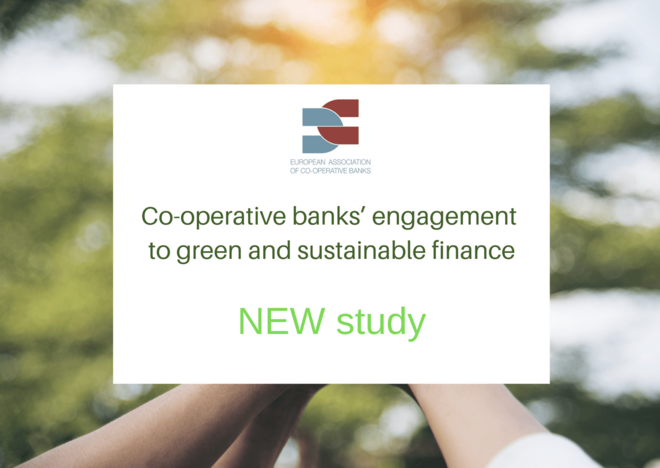Introduction
Co-operative banks’ engagement to green and sustainable finance
Co-operative banks are aware of the challenges of sustainability and global warming. Households, local communities and businesses, the financial sector, cooperative banks, everyone needs to be mobilized to a greater extent than is now the case to address the risks of climate change, harm done to ecosystems and biodiversity loss.
Co-operative banks committed to help accomplish the SDG’s, Paris Agreement and are signatories to important principles such as the Equator principles and the UN Principles for Responsible Banking.
They can help to co-finance investments to bring about the necessary transitions and play an active role by promoting the distribution of services and sustainable investment as well as savings products within their networks. In this respect, renewable energy forms an important part of the financing by cooperative banks and several banks are relevant financial partners in green bonds, which play a key role in mobilizing savings for responsible projects.
In order to play their role properly, cooperative banks require a proportional regulatory framework. This should take into account issues such as the costs of implementing regulations, feasibility and the fact that regulations work out differently for small, decentralized banks than for large banks. The perfect must not become an enemy of the good: beware of too much detail, it must be efficient to get widely adopted and sustainability data must be available, or made available, to be able to report.
Co-operative banks are also in favour of effective regulation to set a price on CO2 emissions, as this can act as a strong incentive for investments in low-carbon technologies. A CO2 price makes it possible for market parties to gradually anticipate to scarcity of CO2 emission rights and helps to achieve an orderly transition.
This publication is based on a survey amongst EACB-members and provides an overview of commitments of the cooperative banks in the field of sustainability and climate, and their activities in this area. It illustrates approaches and shows the involvement of cooperative banks in different countries.
Table of contents
- Introduction
- Summary of results
- Chapter 1 - Engagement and operational practices: reduction of emissions by members, processes that have positive environmental effects, carbon price.
- Chapter 2 - Financing practices: financial products including promotional financing and services oriented to energy efficiency, renewable energy, green bond issues.
- Chapter 3 - R&D&I, and other social action initiatives
Other info: data and reporting


